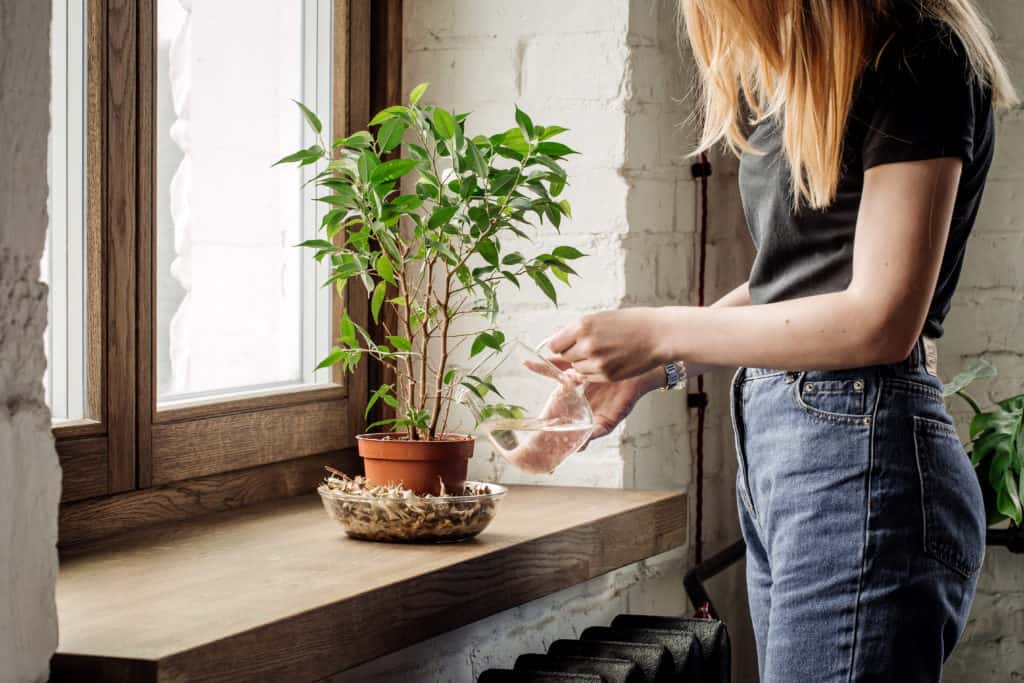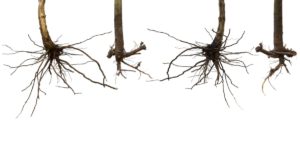If you’ve ever looked at your soil and noticed that it was floating on top of the water, you may be wondering what’s going on. Soil floating is actually a common occurrence, but there can be several reasons why it happens. So – why is my soil floating?
Floating soil is a strong indication that your soil has become hydrophobic, meaning it cannot absorb the required amount of water. If your soil is severely dried out, compacted, or contains a high level of peat moss or clay, soil floating can occur.
Soil float is a common problem, but it can be solved with a few simple changes. By following our tips, you can keep your soil in place and improve your garden’s overall health. Here’s what you need to know.
Why is my soil floating?

Hydrophobic soil makes it impossible for water to penetrate – as you might expect, this can cause major issues for gardeners. There are a few common reasons why soil has become hydrophobic – meaning that it is repelling or failing to mix with water.
Usually, this has to do with the inability of the soil to absorb the right amount of water. When soil is well-aerated, it contains up to 10% air. If water is added to hydrophobic soil or soil that is not well-aerated, it forms a loose, leachy mixture that floats.
So what causes this?
It’s most common in potting soil that contains high levels of peat moss. When this kind of soil becomes dry or exposed to intense wind or sunlight, it can resist wetting later on. As the water flows down the side of the container instead of to the plants’ roots, it only worsens the condition of the soil.
Hydrophobic soil can also occur outdoors. Certain microbes can break down organic matter, waxy leaves, and other material to form a hard, impenetrable layer in the soil that causes it to become waterlogged. A similar phenomenon exists in clay soil, which is naturally more compact. There are fewer spaces between the pores in the soil, so water frequently runs off instead of being fully absorbed.
How do I know if my soil is waterlogged?

While floating soil is the most common sign that your soil is waterlogged, it is certainly not the only one to be aware of.
If you see pooling water, that’s a dead alert that it’s time to take action. However, you might notice the effects of floating soil on your plants before you actually notice the soil itself.
For example, plants that are being grown in waterlogged soil might suffer from issues like yellowing or twisting leaves, spongy areas at the base, roots that appear dark or rotting, or wilting despite receiving plenty of water.
The signs of waterlogged plants are, unfortunately, quite similar to those of plants that are being underwatered. You’ll have to pay close attention. Issues like wilting and dropping leaves are common in cases of both overwatering and underwatering – so be a plant detective to figure out which is the problem!
And if you’re growing plants directly in the garden, there’s one more sign to tell you that your soil is waterlogged besides floating soil – and that’s earthworms.
If you notice an unusual number of earthworms rising to the surface of the soil even when there hasn’t been a lot of rain or right after you have watered, you have a compaction issue. Water isn’t getting to your plants’ roots, and it’s forcing the earthworms to come to the surface so they don’t drown. Take action immediately!
How to stop soil from floating?

If your soil is compacted, you have a few options to rehydrate it and get it back into tip-top shape so it can support the growth of your plants.
If you’re growing in a container, the most obvious solution is to remove the plants from the pot and repot them into a container with a more balanced, hydrated potting soil.
Repotting not an option? That’s okay!
You may also be able to immerse a small- or medium-sized container in a bucket of lukewarm water. At first, the pot will float since there is so much air in the root ball. You might have to weigh it down. With time, the air bubbles will stop coming up and the pot will start to absorb some water.
For large pots or for garden-grown plants, try using drip irrigation or sprinklers set on low pressure for a long period of time. By applying water at a steady, yet low pressure, pace, the soil will gradually be able to rehydrate and open back up to properly absorb the water. Even a hose set at a trickle can accomplish this goal.
If you try this last technique, just make sure you set a timer so you don’t leave the sprinklers on for too long – this will only amplify your problems.
In the future, water plants from the bottom. This will make sure the soil moisture is increased, but only at the plant roots and not on the surface. Bottom watering plants with hydrophobic soil is the best way to both prevent and treat the problem of soil floating.
Other options to address hydrophobic soil include:
- Amending the soil with compost, perlite, or vermiculite to improve its texture
- Aerating it with a tiller or core aerator to help loosen up compaction
- Use a surfactant or wetting agent to break the waxy coating on the soil
- Mist soil regularly instead of watering
- Mulching soil to reduce pooling and run-off
Final thoughts
Why is my soil floating? Chances are, you’re giving your plants too much water.
If you have ever taken a look at your garden and noticed that the soil is floating, you may be wondering what could be causing this. While there are several reasons why your soil could be floating, most are relatively easy to address.
Make the simple fixes we described above, and you’ll be well on your way to growing healthy, productive plants.



